Peru solo travel: 6 months, 2 bags, 1 girl
This solo female travel in Peru travel guide is from my experiences from backpacking Peru for 6 months! I traveled the country from north to south (Mancora to Puno) and in this post, I will share with you all my adventures, including how I ended up living in Peru.
📬 Reader Mail: Hello Trisha! I love all your Peru and South America blogs! I have been following you since 2013 when you first went to South America. I am very impressed with your travels, and now it’s time for me to go! I saw that you were recently in Peru. Can you please help me understand how you traveled to Peru alone as a woman? I would like to get your opinion and read your stories. Thank you so much!
– Justine, San Francisco, CA
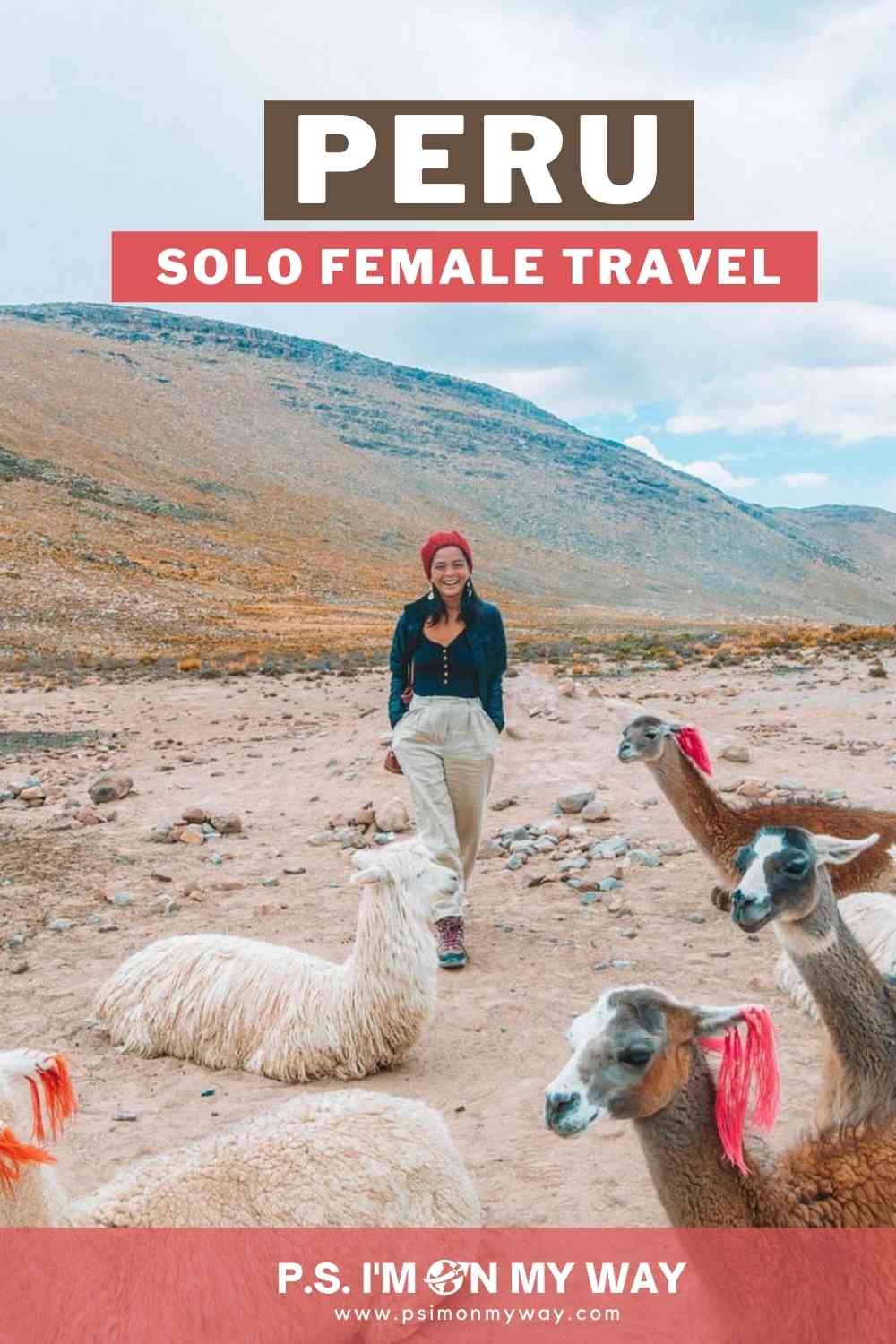
Most of my time in Latin America was spent backpacking Peru and it was one of my favorite countries in South America. Despite its macho culture, the Peruvian people showed me nothing but love and hospitality.
I am not saying this is the best Peru travel guide there is but what I can say is that I’ve spent a lot of time in Peru enough for me to say that these recommendations are credible and are based on experience.
Now let’s get started! The timeframe of your Peru travel is definitely up to you. Each city is distinct and has different activities so you will enjoy jumping from one lifestyle to another.
One piece of advice I can give you is don’t give a time limit for backpacking Peru — take your time because you will be surprised how much you will get to love this country.
I traveled to Peru for a total of 163 days (from north to south, then back to the north again). Honestly, I didn’t have a route in Peru. I just went wherever there was an opportunity for volunteering and visiting friends.
But most of my months here were spent in Paracas – a coastal town one (1) hour away from Lima where I spent four (4) months! In Paracas, I worked in a bar in a hostel. Some people skip this town but this is my favorite place in Peru!
Here, I was able to make long-lasting friendships and up to now, I am still in touch with these people. We even went to Israel to attend one of our friends’ weddings! Peru is where most of my formative years were spent and I will always choose to go back no matter what.
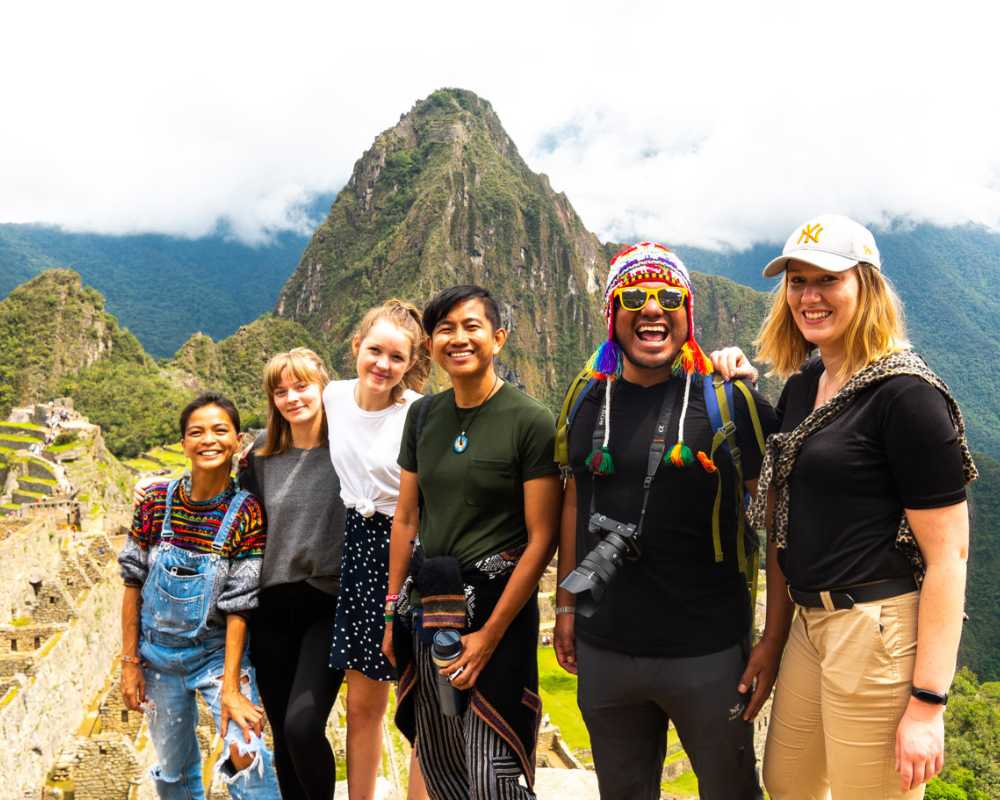

Scared to travel alone? Why not join my trips?
Change the way you travel and spend your money on trips that matter – trips that you will never forget. My group trips are highly focused on responsible travel, supporting local communities, and avoiding the obligatory touristic circuit.
🇵🇪 Peru travel at a glance
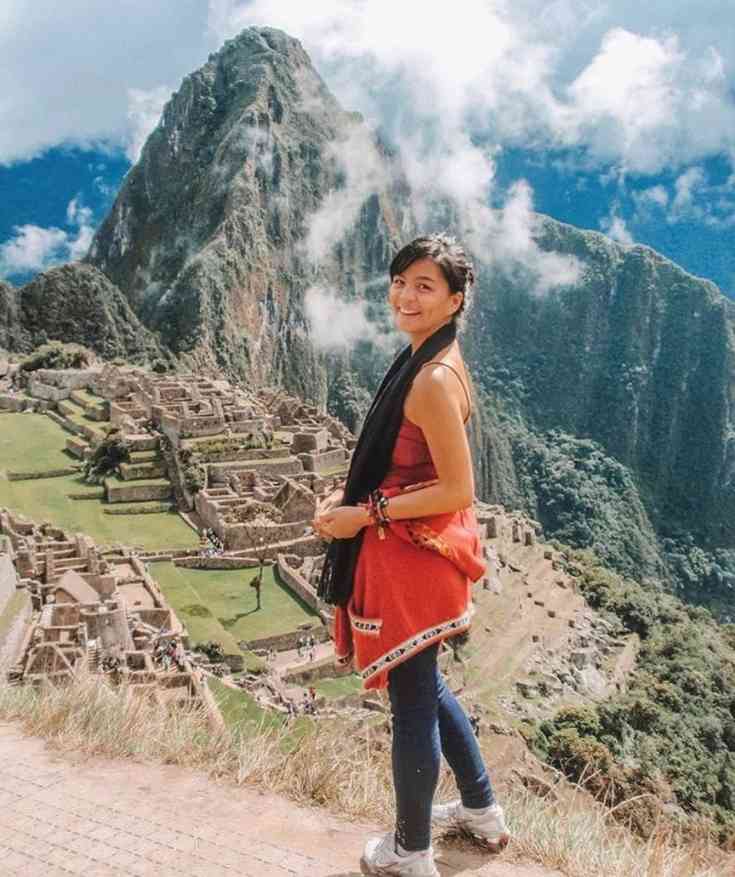

Capital: Lima
Currency: The currency in Peru is called the New Peruvian Sol (PEN). $1 USD = S/3.76. Please note that all prices in this article are in US dollars.
Power plug: Peru uses types A (2 flat parallel pins), B (two flat parallel pins and grounding pin), and C (two round pins).
Visa: Americans, Canadians, Australians, British, and most European citizens don’t need a visa to visit Peru. You can stay up to 4-6 months on a tourist visa.
Language: The language in Peru is Spanish. In Lima, many people speak English since it is the business hub but in most tourist spots in Peru (especially in the mountains), people don’t speak good English.
Transportation: Traveling the country by bus is common and it is very efficient. Most travelers who visit Peru have the exact same route so Peru is quite easy to navigate. This is not something you have to worry about in Peru. They have designed their transportation to go to the most remote places.
Wifi/Internet in Peru: Internet in Peru is not that fast but this is only a concern if you are working remotely. For Peru travel navigation, the Internet connection is stable bus as as a digital nomad, the only place that I didn’t have Internet problems was Lima.
If you want to purchase a sim card, Claro and Movistar are 2 of the network providers in Peru. A sim costs $5 without data. You can top-up/reload in any convenience store in Peru. I used Claro while I am in Peru (I availed a plan) but most of my friends are with Movistar.
Suggested travel duration: Peru is a big country. I did it for 6 months but I had planned to travel the whole country slowly so 6 months was the right timeframe for me. If you have a time limit, a 2-week Peru vacation is enough time to visit the important landmarks.


Let me help you plan your trip! I’ve been giving expert and genuine advice to solo travelers and digital nomads for the last 15 years. You choose the destination and I will answer all your questions! [ Talk to Trisha ]
⛔ Is solo female travel in Peru safe?
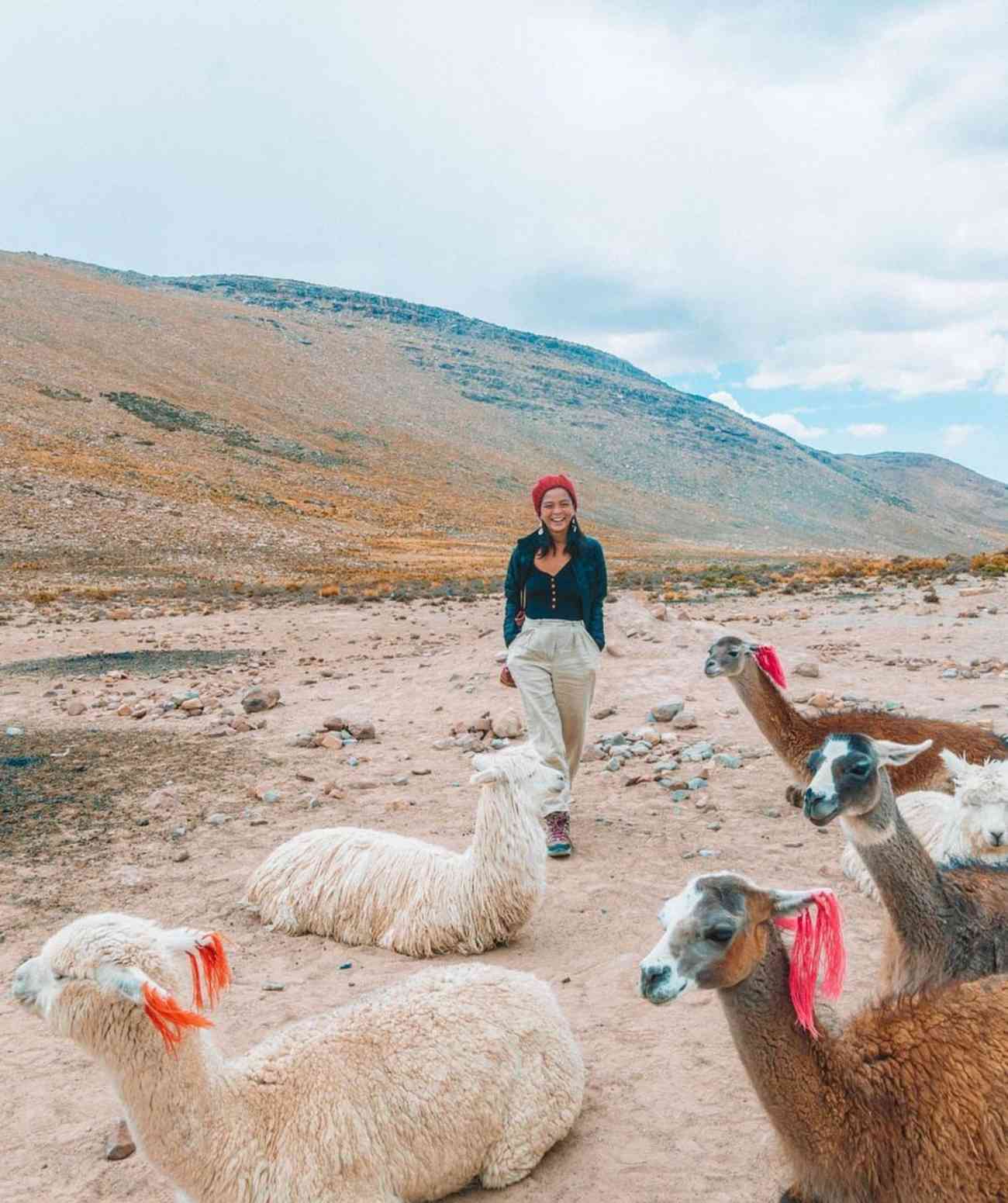

To answer this question, let me give you a background of my relationship with Peru. I first arrived in Peru in 2014, overland from Ecuador. It was a time in my life when I didn’t fear anything and Peru also didn’t have that bad press.
Most of the backpackers I met when I started my South America travels in Colombia are raving about how beautiful Peru is. So, I hopped on a 14-hour bus from Quito, Ecuador, and decided to see Peru for myself. I planned to stay for only 90 days but I ended up staying for a year.
Up until today, on my second visit in 2020, I still find Peru one of the easiest countries to travel to, mainly because of its backpacker culture. The thing with Peru is, you’re alone, but not really. Peru is a favorite of thousands of backpackers because of its friendly terrain.
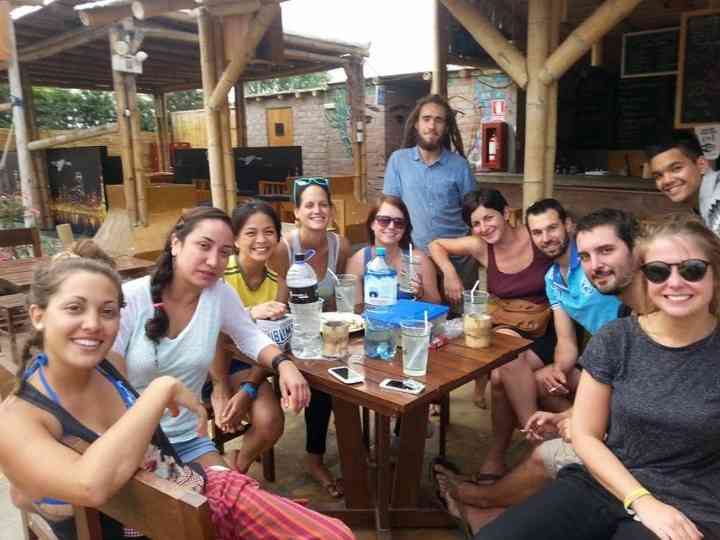

Believe it or not, I met all my long-term friends in Peru, and up until today, we’re still very close and in touch. When you’re traveling for long periods of time, staying in a hostel is a good way to get to know people.
Information also disseminates pretty fast when you’re staying in a hostel. You’ll be offered information you’re not looking for just by conversing with people at the hostel. I didn’t learn about most of my Peruvian adventures online – I learned it face to face from backpackers who had already done the trip.
There is somewhat of a pattern or a system when you’re traveling in Peru. Everyone does the same route and every person you’ll come across seem to be knowledgeable about traveling in Peru.
I am saying this so you won’t think (or stress) a lot when planning your solo female travel in Peru. Whatever you do, wherever you go in Peru, I assure you will make friends who can potentially be your travel buddies.
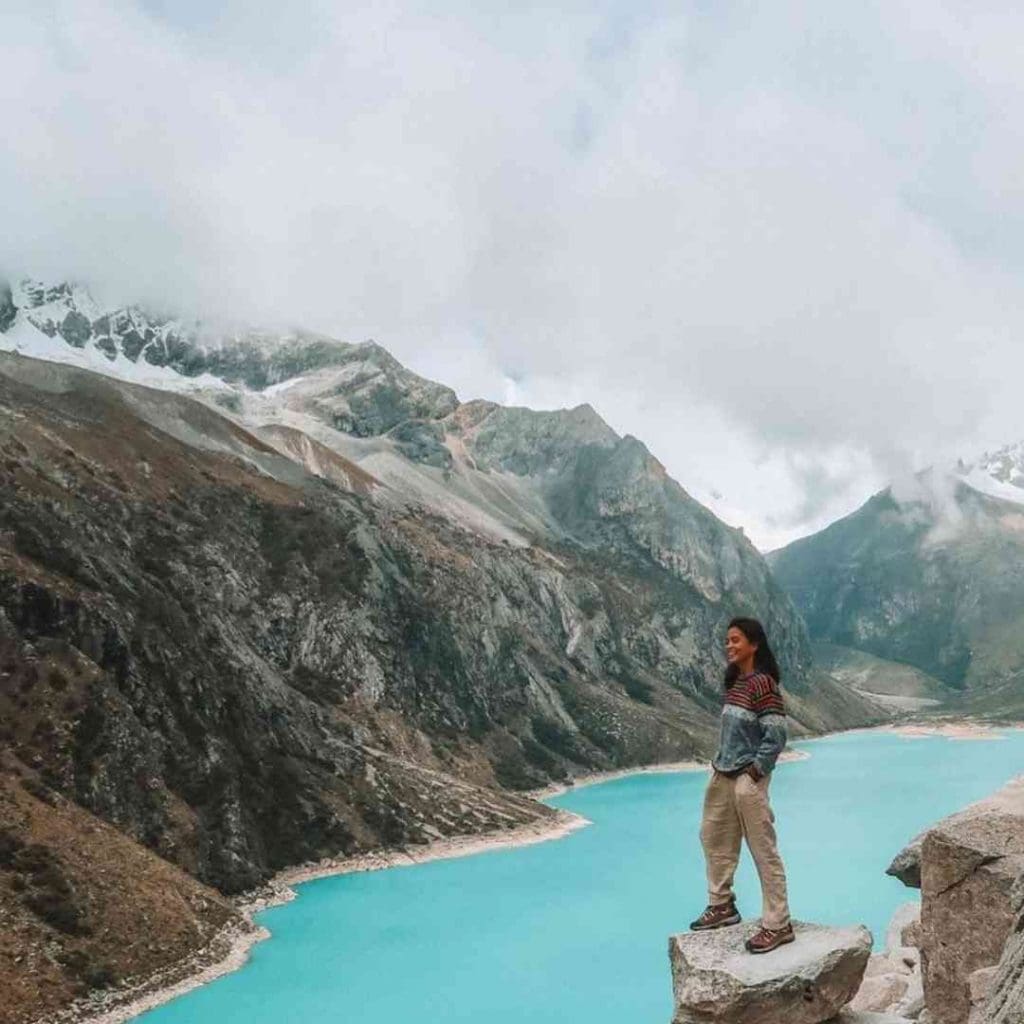

The Peruvians are very friendly people and I never felt harmed here. Peru is a country that is so used to tourism that even the most remote places will get used to tourists. The only dangerous place I would say is Lima, where petty crimes and violence against women happens a lot.
Look, I’ve stayed in Lima but I have Limeño friends who I always hang out with. I never go to places they tell me that is dangerous. They also make sure that we would carpool or drop me home via Uber (especially my guy friends!) when we go out late in Lima.
Lima is such a fun, dynamic, and young city but I would not recommend you to be on your own if you don’t speak Spanish or you don’t know the area well. Lima is so fun to explore and there are many things to do! Overall, most areas of Peru are safe so don’t worry about this.
✈️ Peru travel planning
Best time to visit Peru
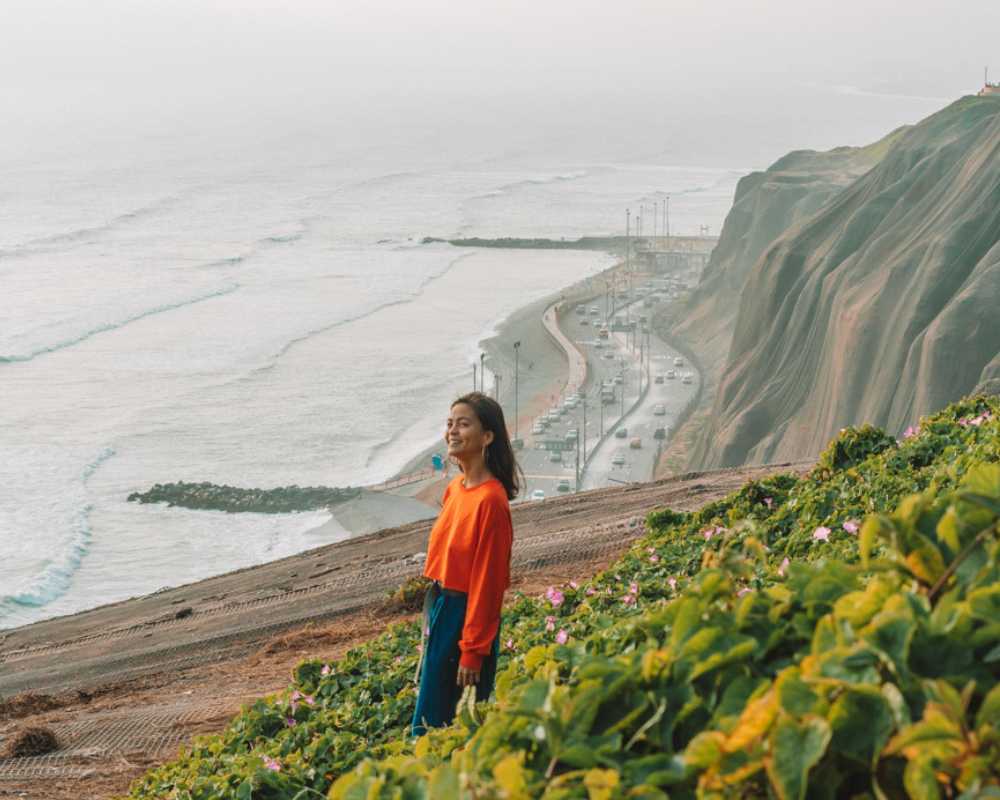

Peru has different climates and weather. To understand when to visit Peru and plan your travels accordingly, you need to take note of what activities you want to do, especially if you’re traveling for a fixed number of days.
The coastal areas, including Lima, are generally dry with mild temperatures, while the Andes experience cooler weather and a distinct rainy season from November to March.
The Amazon basin is hot and humid year-round. For solo female travel in Peru, the best time to visit is during the dry season, from May to October, when trails are accessible, and the weather is more predictable.
Peru entry requirements


Before embarking on your Peru travel adventure, it’s crucial to ensure all your travel documents are in order. You need a valid passport, and depending on your country of origin, a visa may also be required.
Travelers from the United States, Canada, most European countries, and Australia typically do not need a visa for short tourist or business visits to Peru.
Upon arrival, immigration officials will give you 30 days minimum but you can ask for more if needed. The maximum is 183 days. For example, you can say that you will be volunteering for 3 months so you need 90 days in your passport.
One important thing that is often ignored by travelers in Peru is the immigration card given to you when you enter Peru. Please keep it because they will ask for it upon exiting the country. If you lose it, you will have to pay $8.57 USD.
Lastly, you must have a passport valid for at least six months beyond the planned date of departure from Peru.
What to pack for Peru travel
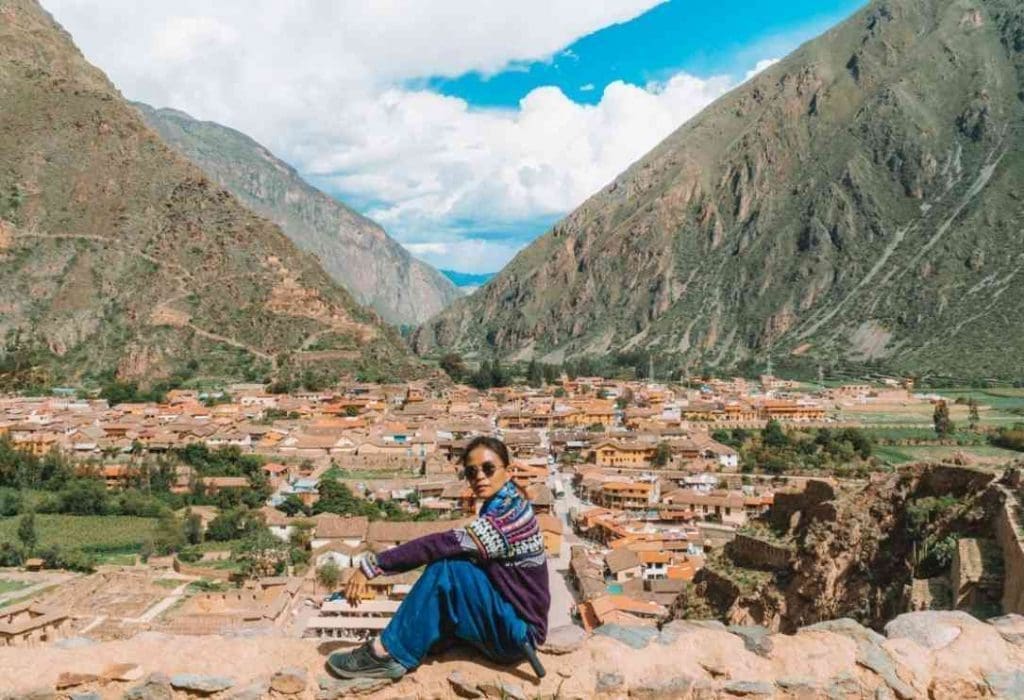

Peru has many climates so if you are planning to travel the whole country, you will need to bring different types of clothing. First, you need proper hiking shoes because the hiking terrain in Peru requires them.
You can’t just go in normal running shoes. My rubber shoes broke after hiking in Huaraz but I managed to buy a new one at the shopping mall in Lima.
You also need windbreakers and raincoats as it can get wet and cold in the mountains of Peru. For those who are going to do the Inca Trail, you may need a hiking backpack to pack things enough for 3-5 days.
You can pay for a porter during the Inca Trail expedition so you can put whatever’s necessary for the long hike.
Lima, Mancora, Paracas, and the coast of Peru are hot and sunny so make sure to pack swimwear and flip-flops. Personally, I don’t wear slippers when traveling to Peru. I always opt for fashionable hiking sandals because they are sturdier and you can wear them with anything!
Make sure to include proper hiking socks (not just any type of socks) in your Peru packing list. You can also bring 2 pairs of warm hiking pants.
You can always bring more of these because some of the hikes are muddy and dirty. The mountains are also always cold so buy hiking pants that will keep you warm.
If you forget to pack anything important, many markets in Peru sell affordable ponchos, jackets, hats, and socks.
Flights to Peru
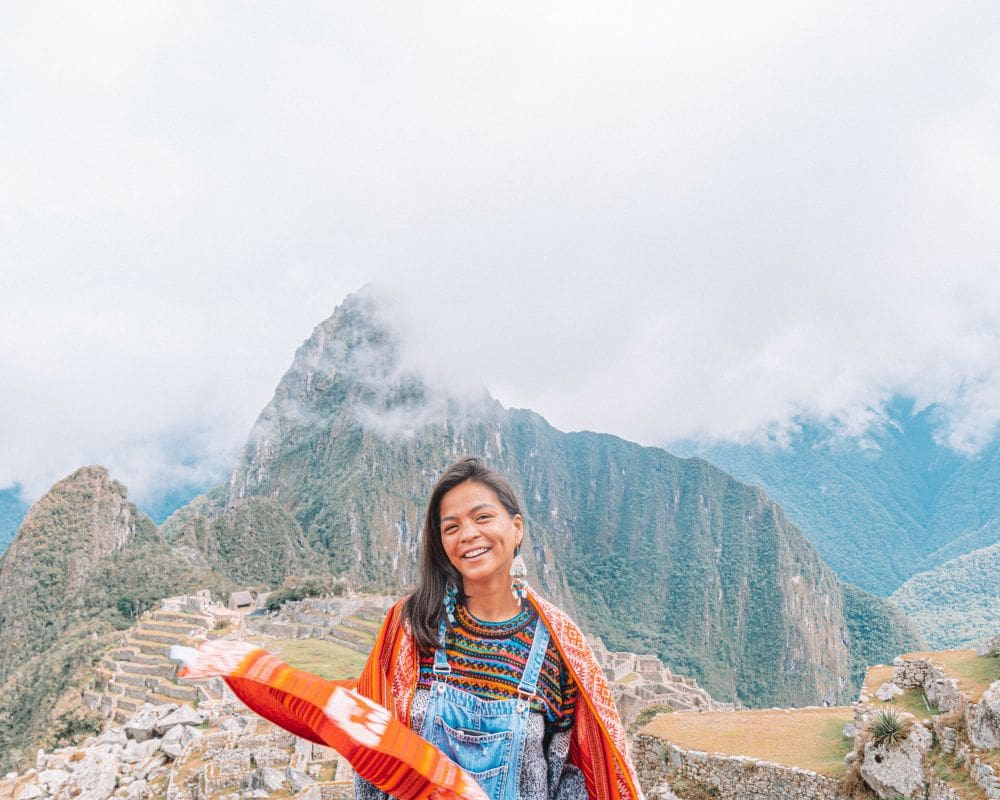

The points of entry to Peru are through major flight hubs, Lima and Cusco. Most travelers who are only doing the southern itinerary fly direct to Cusco and skip Lima but I still recommend you to go to Lima!
The following cities have direct flights from the USA to Lima, Peru:
- Fort Lauderdale via Spirit Airlines (5 hours, 42 minutes)
- Los Angeles via LatAm Airlines (8 hours, 40 minutes)
- New York via United Airlines (7 hours, 45 minutes)
If you want to fly to Cusco from the US, you can use the form below as it automatically suggests prices on your current location.
For those who are traveling from Europe, Air Europa and Plus Ultra Lineas Aereas fly directly from Madrid to Lima. The flight duration is 12 hours and you will find flights for less than $1,000 USD. Those who are flying from London (Heathrow) will have to stop in the USA.
Australian travelers are fans of Peru but with the distance between these two countries, it can be hard to get a flight. Most AU flights (from Sydney or Melbourne) have direct flights to Santiago, Chile, and Buenos Aires, Argentina.
You can book these flights and then book a separate flight to Peru from these two cities.
🚌 Getting around Peru
By air
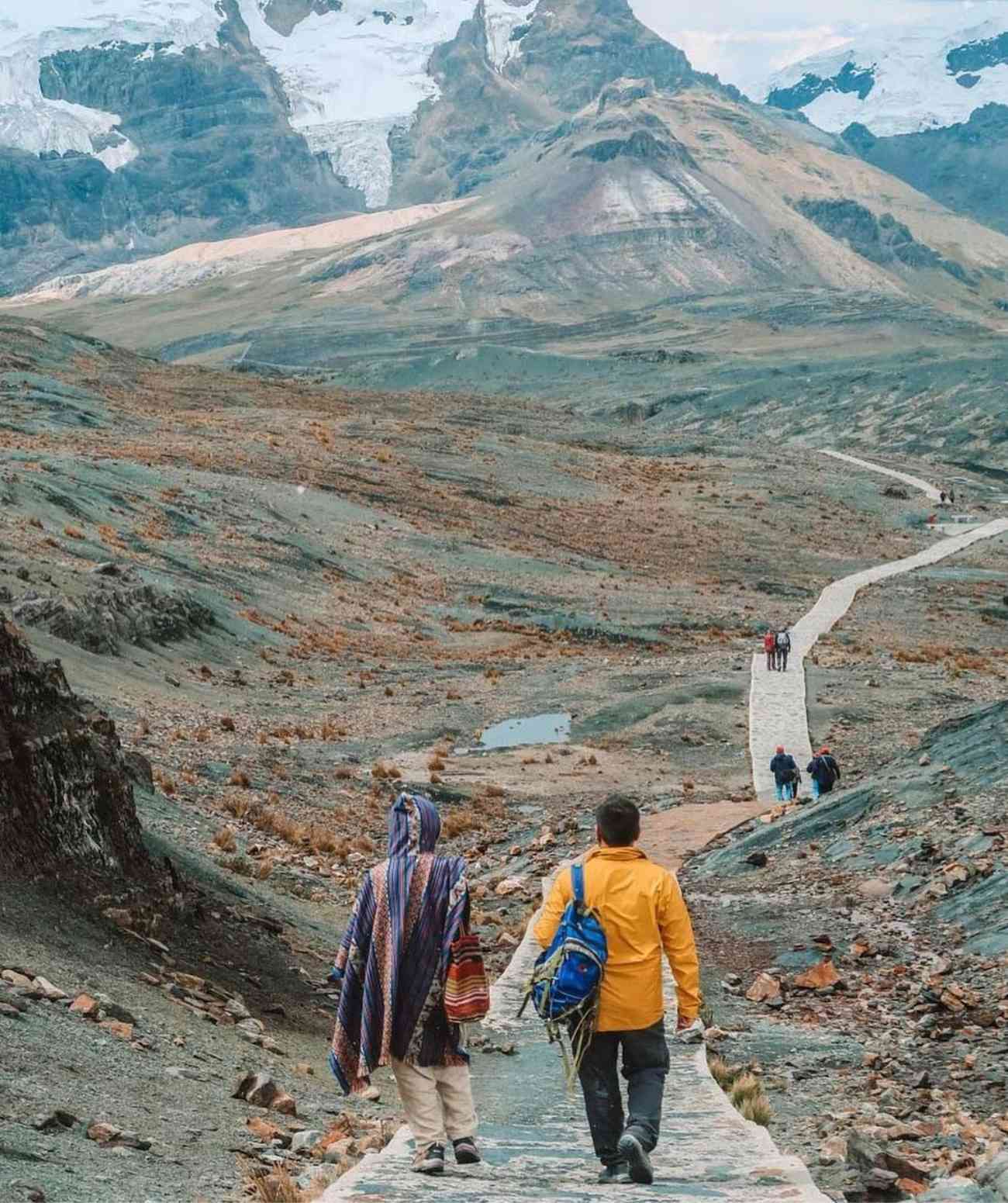

Peru is a big country so if you don’t have a lot of time, flying by air is reasonably priced. Arequipa, Chiclayo, Cuzco, Iquitos, Juliaca, Piura, Puerto Maldonado, Tacna, Tarapoto, and Trujillo.
LC Perú flies from Lima to Andahuaylas, Arequipa, Ayacucho, Chachapoyas, Chiclayo, Cajamarca, Huánuco, Huaraz, Iquitos, Trujillo and Huancayo (Jauja) on smaller turbo-prop aircraft.
I always use Viva Air because they are the cheapest in my opinion. They have a lot of promo flights, too!
By bus
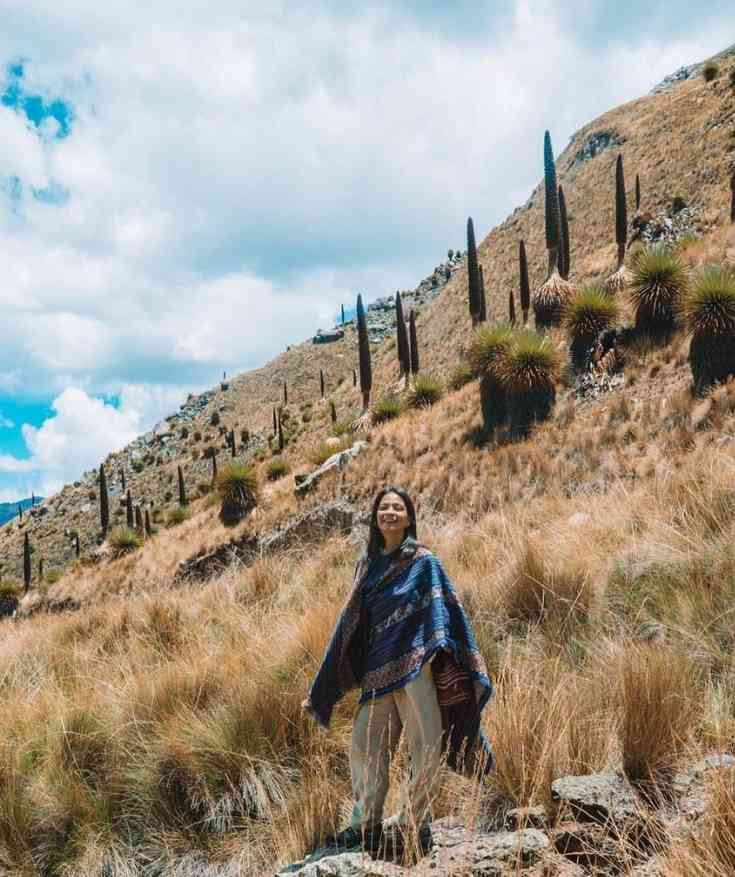

Public transportation is an integral part of Peru travel. The country boasts an extensive network of bus routes connecting major cities and remote destinations.
For long-distance travel, numerous bus companies are offering a range of services, from basic to luxurious ‘cama’ (bed) buses with reclining seats and onboard amenities like Wi-Fi and entertainment systems.
Key routes connect Lima with major cities like Cusco, Arequipa, and Trujillo. When selecting a bus company, prioritize safety and reputation; companies like Cruz del Sur are well-regarded for their reliability and service quality.
Tickets can be purchased online in advance or at bus terminals. For shorter journeys, regional and local buses provide a more economical means of travel, though they are often less comfortable and more crowded.
Always keep your belongings secure and be aware of your surroundings, especially on overnight journeys. I usually prefer to wrap my backpack at the bus station for safety.
🛏️ Accommodations for solo female travel in Peru
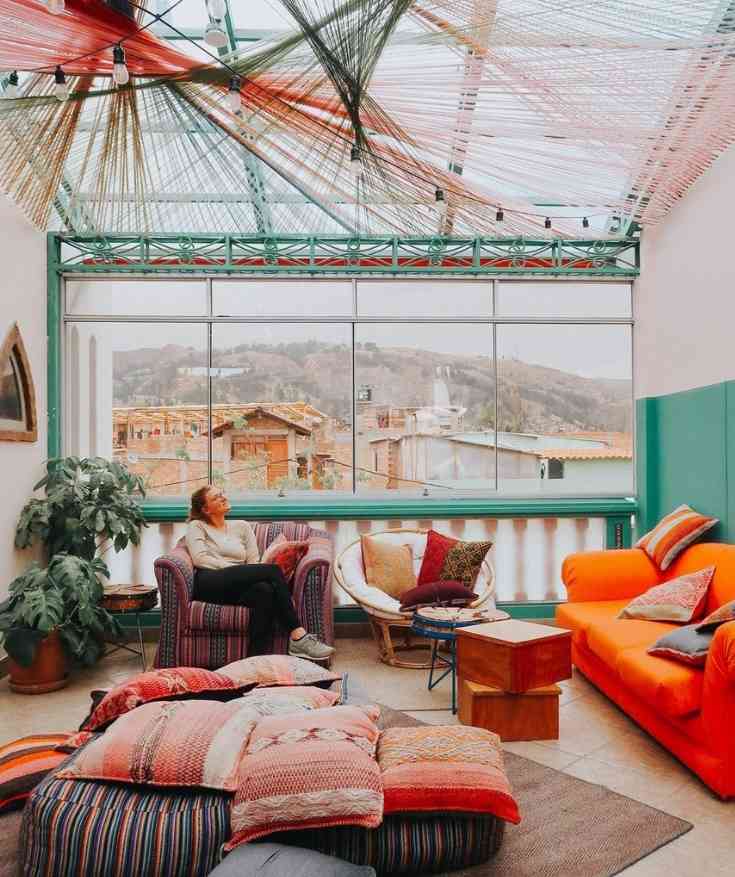

When it comes to accommodation in Peru, travelers have a plethora of options to suit every preference and budget. I worked in hostels in Peru so I did not pay for accommodations!
Of course, I was able to volunteer because I was traveling Peru indefinitely. You need at least 2 weeks to get free accommodations. If you don’t have much time, these are the best accommodation options for solo female travel in Peru:
Choosing Between Hotels, Hostels, and Guesthouses
Hotels offer a range of services and amenities, from basic to high-end luxury, ideal for those seeking comfort and convenience. For solo female travelers in Peru looking for a more social atmosphere, hostels are a great choice.
Hostels in Peru provide opportunities to meet fellow travelers and often organize group activities. Guesthouses, or ‘casas de huéspedes’, offer a more local experience, often with the chance to interact with Peruvian families.
Recommendations for Budget and Luxury Stays
For budget-conscious travelers, hostels in major cities like Lima, Cusco, and Arequipa offer dormitory-style rooms at affordable rates. In more remote areas, guesthouses provide simple, cost-effective accommodation.
For a luxurious experience, Peru boasts high-end hotels in major tourist destinations, offering exquisite amenities and exceptional service. Boutique hotels in historic buildings provide a unique blend of luxury and cultural immersion.
You can book a hotel or private room in Peru for as low as $45 per night, including breakfast!
Safety Tips for Choosing Your Accommodation
- Opt for accommodations in well-populated and well-lit areas or in popular neighborhoods
- Check reviews and choose places with good security measures like 24-hour reception and lockers for valuables
- In hostels, consider female-only dorms for added comfort
- Always inform someone trustworthy, like the hotel staff, about your travel plans for the day
🍲 Food in Peru
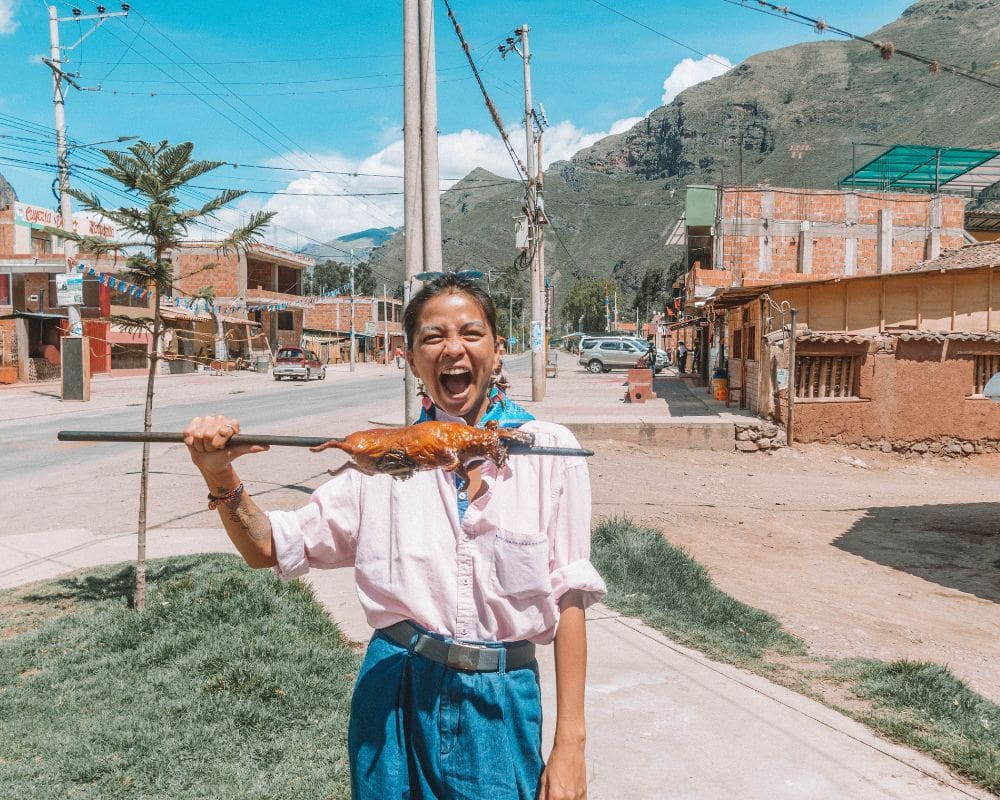

Peru has an established gastronomical reputation in the world as the best cuisine in Latin America. Peruvian food comes from different cultures (mountains, highlands, seas, the Amazon).
They also have a big Japanese immigrant population (like Brazil) so you will see many dishes in Peru that have a Japanese infusion.
The Peruvian-Chinese restaurants are called chifas and you will see them everywhere in Peru. Chifas are cheap and are considered comfort food for the Peruvians.
Must-Try Dishes and Local Delicacies
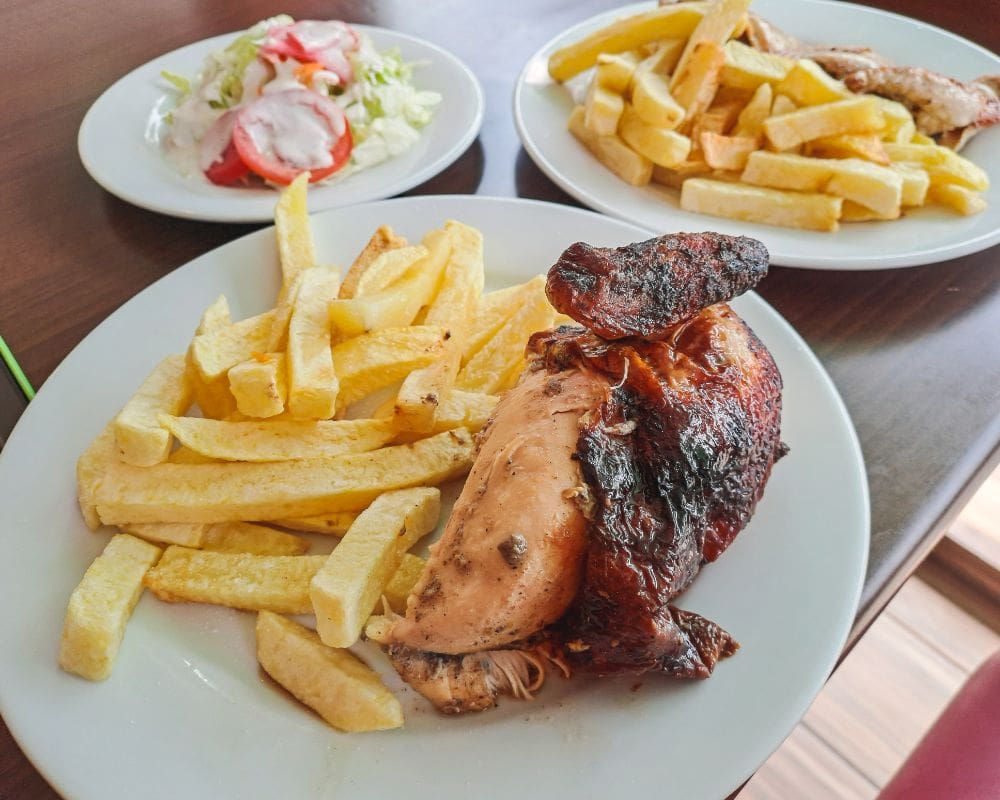

Peru travel is incomplete without indulging in its rich culinary heritage. Solo female travelers should not miss out on the national dish, ceviche – fresh, citrus-marinated seafood.
Other must-try delicacies include lomo saltado (stir-fried beef with vegetables), aji de gallina (creamy chicken stew), and for the more adventurous, cuy (guinea pig), a traditional Andean delicacy.
For vegetarians, quinoa-based dishes and the hearty potato stew known as causa offer delicious options.
Best Places to Eat as a Solo Traveler
Peru offers a range of dining experiences from street food stalls and local markets to upscale restaurants. Lima, the gastronomic capital, has several internationally acclaimed eateries.
Solo travelers can find welcoming atmospheres in the local picanterías of Arequipa or the traditional chicherías in Cusco. Markets are also great places to sample a variety of foods affordably and observe local life.
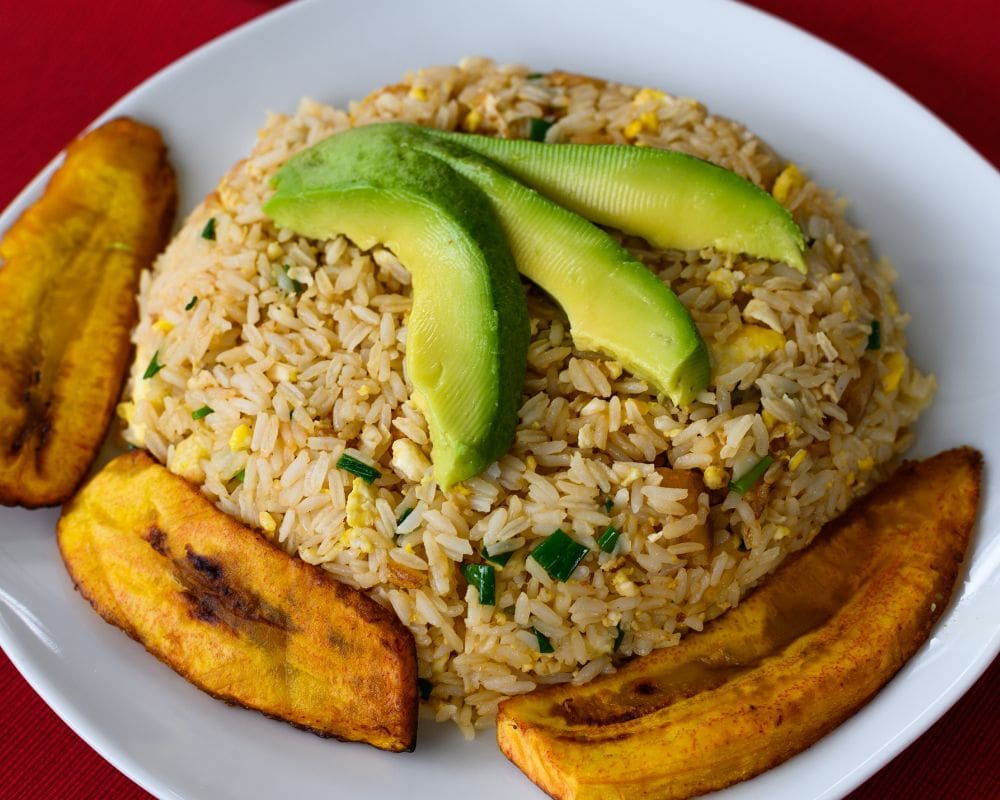

Dietary Tips and Allergen Information
When engaging in solo female travel in Peru, it’s important to be mindful of dietary needs and allergens. Street foods, while tempting, may not always adhere to the highest hygiene standards, so it’s advisable to eat at busy stalls where food is prepared fresh.
For those with specific dietary restrictions or allergies, it’s wise to learn key phrases in Spanish to communicate these needs.
Also, consider carrying a card with dietary restrictions written in Spanish to show at restaurants. Remember, staying hydrated is crucial, but tap water is not drinkable in Peru. Always opt for bottled water.
💰 Peru travel costs (single person)
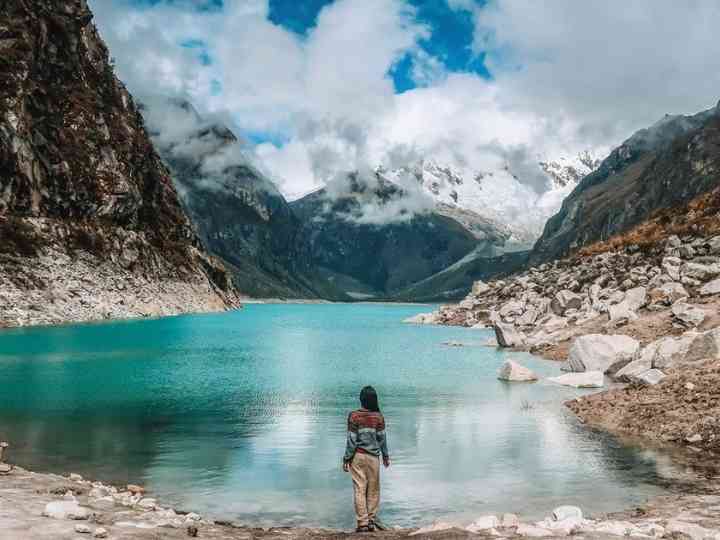

The currency in Peru is called Nuevo Peruvian Sol (PEN). 1 PEN = $0.30 USD (est). Below are some estimates for you to have an idea of Peruvian prices:
- Lunch in a business district restaurant: $4.48
- Combo meal in a fast-food restaurant: $4.48
- 1 bottle of red wine (good quality): $10.46
- 2 liters of Coca-Cola: $2.09
- 1 cocktail drink in a downtown club: $6.87
- Cappuccino in expat area of the city: $3.29
Accommodation costs in Peru
Hotels in Peru start at $45 (2 pax, decent hotel with breakfast). Many travelers prefer to go to a hostel ($17 per night) because of the opportunity to hike with other travelers. Hostels in Peru are really good, affordable, and fun!
Food costs in Peru
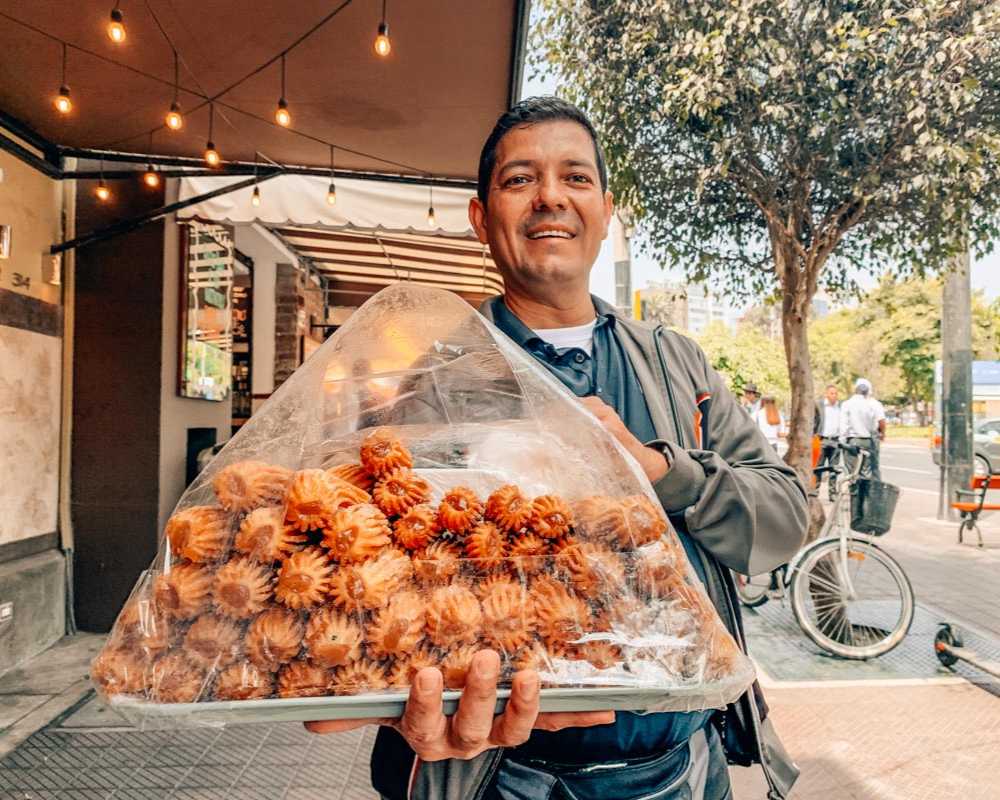

Street food in Peru is less than a dollar. Every destination in Peru has its own local market where you can eat homemade food for cheap. For a daily food budget estimate, let’s say you are fine in Peru with $7 per meal.
Gourmet restaurants can cost up to $50 with drinks. Many Michelin star restaurants in Lima offer an extensive tasting menu from $200.
Activities costs in Peru


Peru tour packages and expeditions start at $1,500, depending on the number of days you want to avail the package. In this section, I can’t be very specific because it all depends on the things you want to do.
All Peru tours that you will see on this guide have prices so keep reading and see what activities you may be interested in. From there, you will have an idea of what tours in Peru cost.
⛰️ I have a local tour guide in Peru who can plan your Peru tour packages and itinerary. He is a local I am supporting and I’ve done many tours with him! Get in touch with me and see how I can help you plan your solo trip to Peru!
Money exchange in Peru
The best currency to bring to Peru is USD. Make sure to look for certified badges for currency exchange kiosks as some can be dishonest at times. I don’t recommend exchanging at the airport. You will get better rates in the city.
ATM withdrawals in Peru
There are many available ATM machines all over Peru including bus stations. I never had a hard time withdrawing from Peru. If you will not bring US dollars, the ATM exchange rates are not that bad, too.
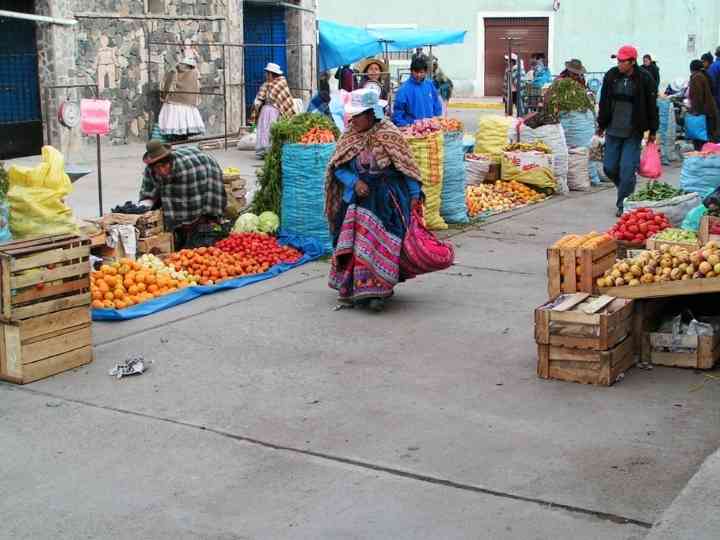

Credit/debit cards
Credit cards are accepted in Peru with an estimated 7% fee. Visa and Mastercard are the most common. I didn’t see AMEX or JCB a lot so better bring more card options.
Tipping in Peru
Tips are not required for taxis but restaurants expect 10% tips for service. Tour guides should also be given tips.
📍Peru Destinations for Solo Travelers
I’ve stayed in Peru long enough to know the country but you need to understand that Peru is a big country – you can’t possibly see all in a short period of time.
Before deciding on your Peru itinerary and route, let’s take a look at the best places to visit in Peru. Here are my favorite destinations for solo female travel in Peru:
Mancora
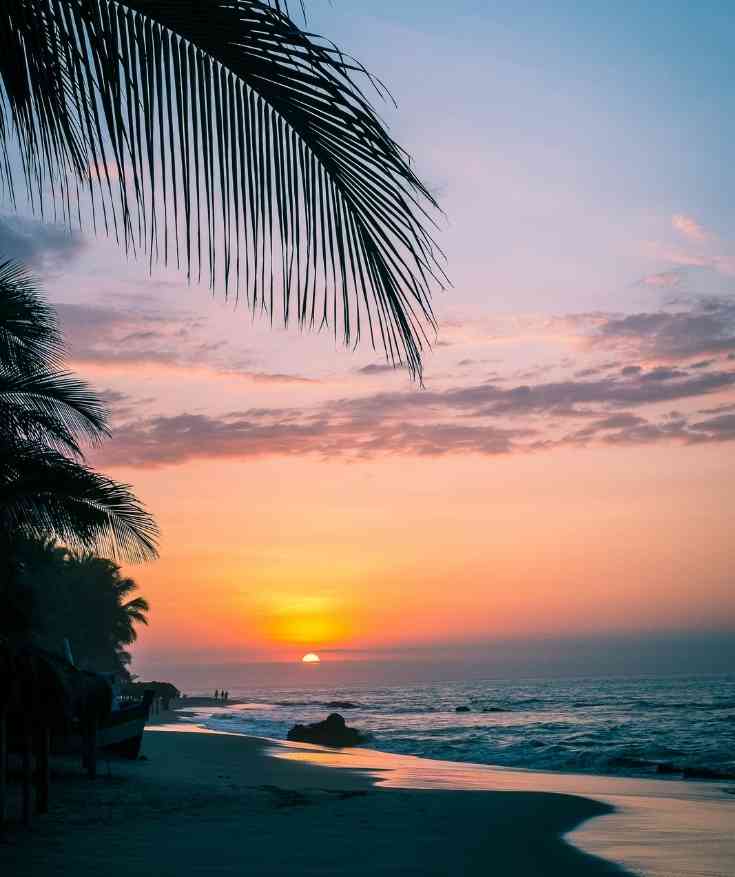

Mancora is close to Piura and is considered to be the party hub of Peru. Surrounded by beach bars, loud hostels, and surfing/kitesurfing activities, Mancora is the favorite stop of backpackers.
I was here for 6 weeks volunteering in a hostel and it was difficult for me to leave as much as it was for my co-volunteers.
You will not find very wild nights in other cities of Peru so this can be your break — be young and free. You can be an idiot and a child here for as long as you like.
Nobody will judge you. Mancora is a coastal area so most tourists come here for surfing and Kitesurfing. You can take these lessons in between or even work in a surf hostel!
Plan your trip:
Huaraz
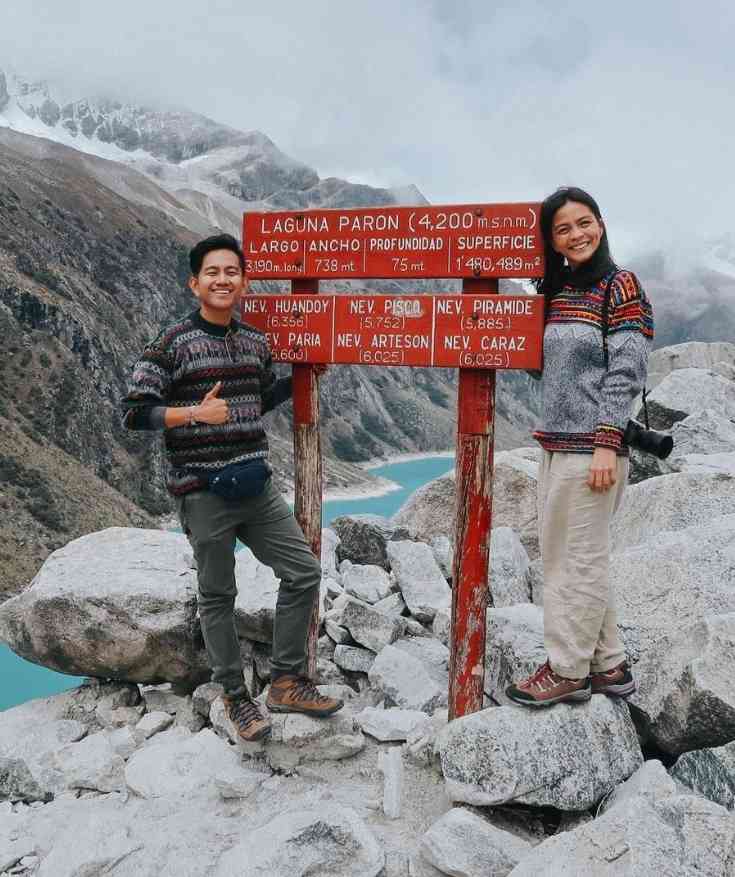


Huaraz is not part of the usual full south Peru itinerary but it’s definitely one of my favorite places in Peru. Huaraz is rich in outdoor activities like hiking or camping and you’ll be surrounded by lakes, mountains, and trails. I am not a professional hiker but I still found Huaraz a place I can enjoy.
In terms of safety, I haven’t heard of anyone who got lost (nor harmed) on the trails. Doing the treks on your own seems like a great adventure but you need to arrange a lot of logistics in order to do this.
You need to have a car, a radio that will allow you to communicate in case you get lost, and many other things that need to be in the loop while out in the wilderness.
You can do the hikes yourself as Huaraz trails are usually filled with signs and directions. If you want to sign up for tours, they’re very cheap, too!
Day trips to the mountains and lagoons start from $10, with food. This can be easily booked in your hostel even without prior notice.
Plan your trip:
Lima
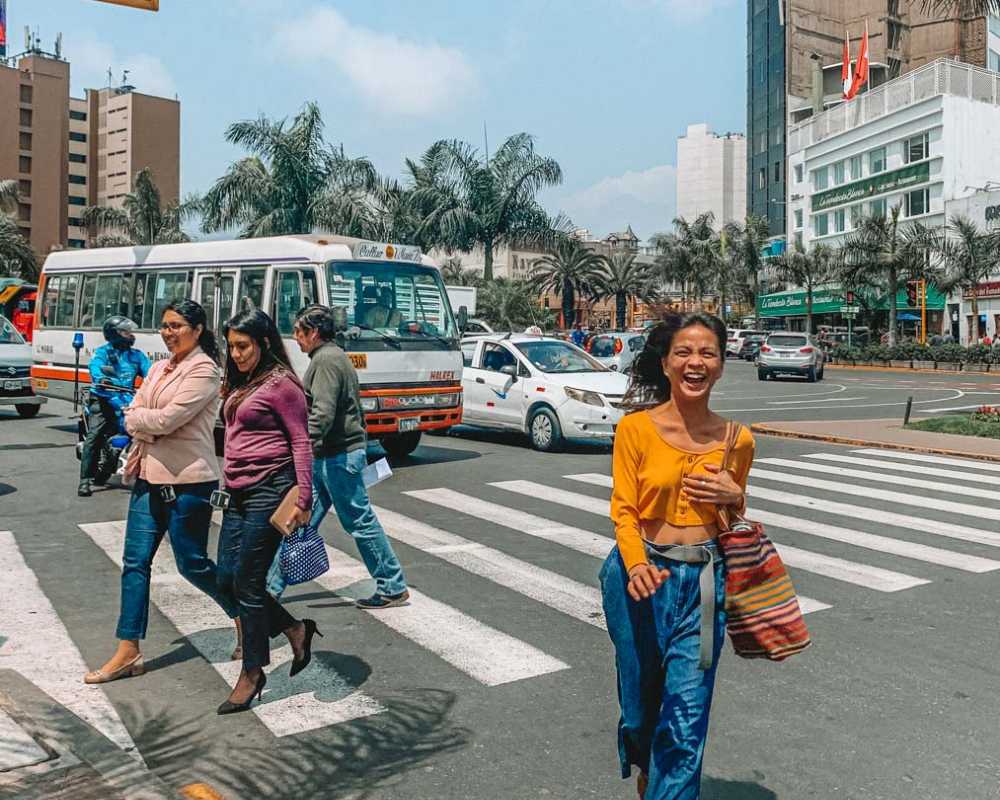

After some life-changing activities in Huaraz, head to Lima for an ultimate cosmopolitan vibe and city life. Travel time to Lima from Huaraz is 7-8 hours and bus prices range from $14 – $25 Madrid was the first thing that came to mind when I saw the center of Lima.
Like most capitals, Lima is busy 24/7 but it’s not your typical bustling city. Most backpackers spend a day or 2 here as it is the flying hub or making a stop-over to see friends who are also leaving for their flights.
What most people don’t know is that Lima offers the best gastronomic experiences in the whole of Latin America. 4 of the best restaurants in the world are located here.
Lima serves as a cultural and culinary hub that should be a cornerstone of any Peru travel itinerary.
Plan your trip:
Paracas
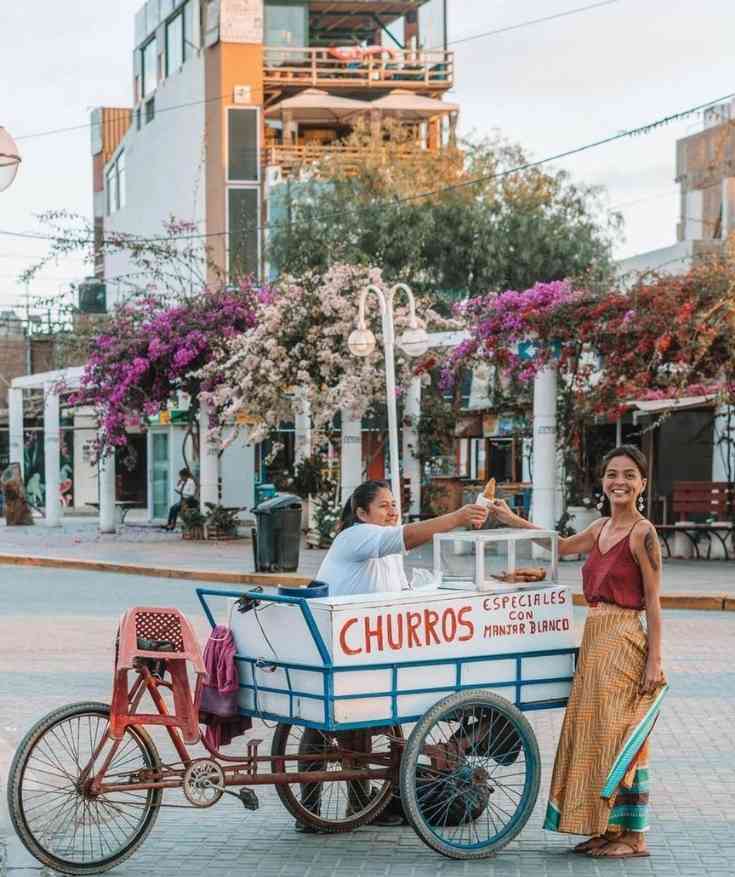

Also, a place where people go for day trips, Paracas is where I lived for a year! People don’t know much about Paracas and I often get the question of why I’d stay there for a long time when there are not many things to do.
The thing I like the most about Paracas is that it’s very familiar. I volunteered in Paracas in 2014 and was asked to be a bar manager – it was the best year of my life! Because of the Paracas National Reserve and the Islas Ballestas, Paracas is a highly touristic place but you will see how the local people have adapted to this touristic boom.
People in Paracas are very friendly and since it is a small town, everyone knows everyone! Personally, it was so easy for me to live in Paracas because there are beaches everywhere – it’s surely a great spot for a long-term stay.
Plan your trip:
Arequipa


Arequipa will easily top the best cities to live in Peru list because of its great weather! Arequipa always has the “spring-ish” weather and does not have high altitudes like Cusco so many people opt to visit Arequipa and stay longer.
Arequipa is a very modern city where Peruvians come to obtain a higher level of schooling. I felt safe walking here at night as it is also a city that is kid-friendly. Children are always out on the streets (or in the plaza) which makes it a very comfortable environment to be in.
Plan your trip:
Cusco
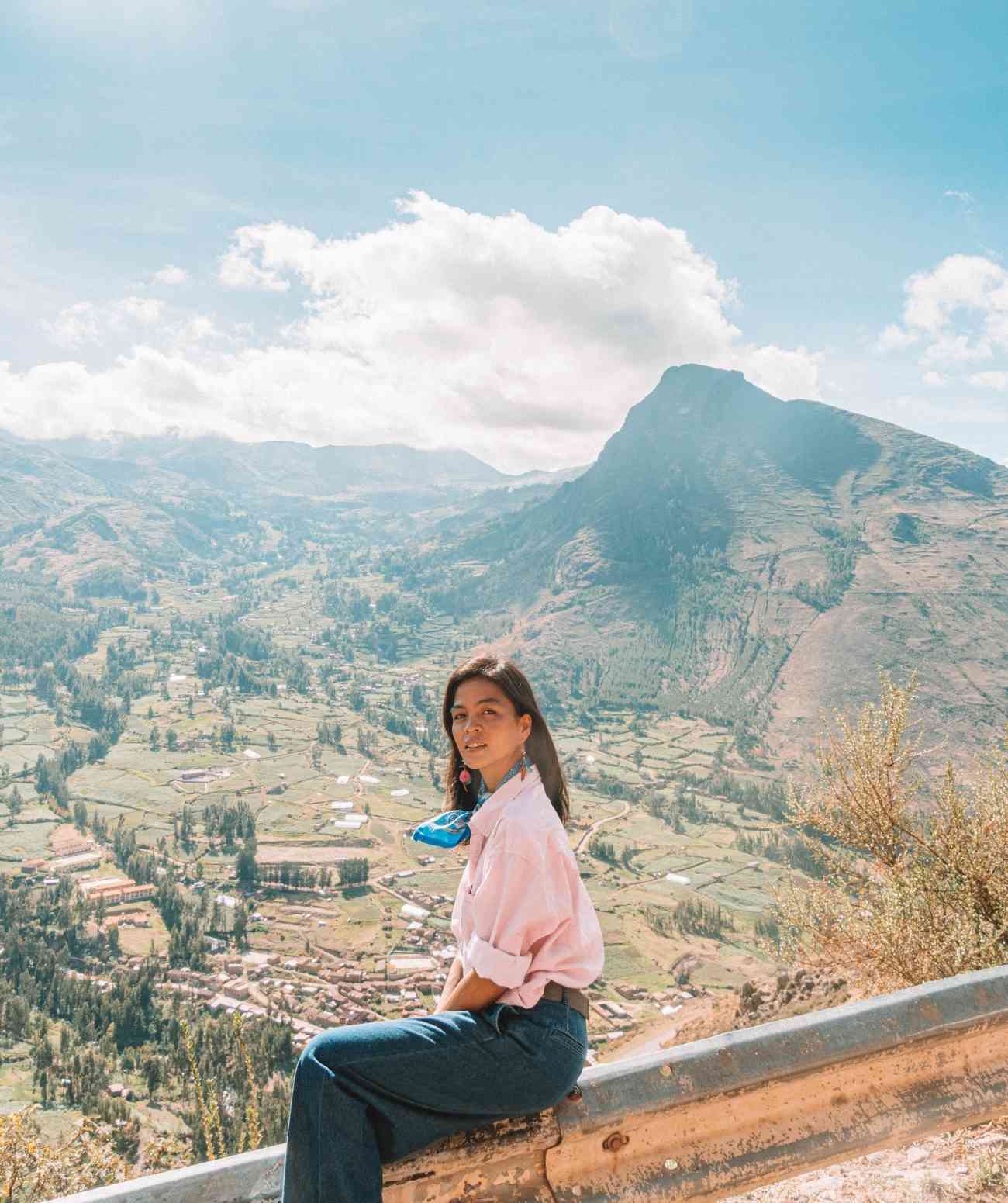

Cusco is not hard to sell because of Machu Picchu. There is no way people will skip this city because of the many famous wonders surrounding it, not only Machu Picchu but the Rainbow Mountain and areas like the Sacred Valley.
However, if we are only talking about the city itself, I found Cusco to be very similar to Rome, where the weather is awful (and often raining) but everyone still knows how to have fun. When I first came here in 2014, I expected to be curled with my pillow and in bed all day because of the cold weather but Cusco is so active, especially the nightlife!
It is very safe to walk at night. Cusco is a very walkable city. Beware when you’re in clubs though. In 2019, many bars closed because of drug raids. Be careful with who you are with because Cusco is trying its best to fight the rampant drug culture in the city. Don’t involve yourself in such things so you won’t get into serious trouble.
Plan your trip:
✨ Peru travel tips
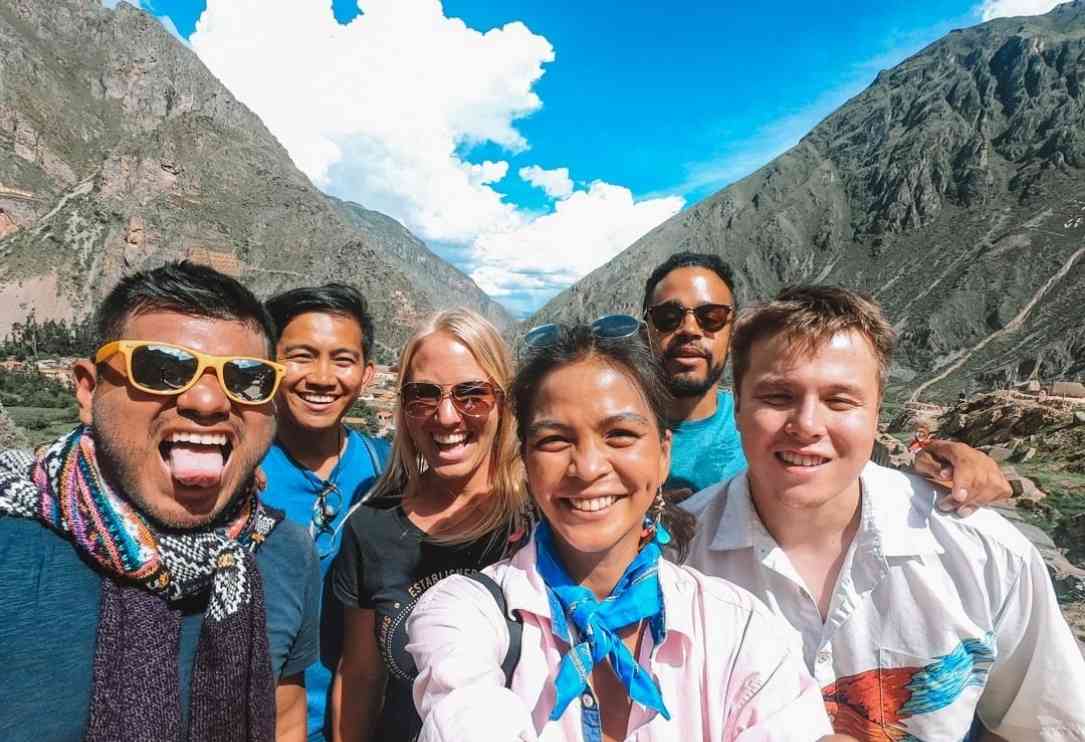

Unlike their South American neighbors, it is very rare for Peru to get bad press. People always visit because they have what other countries don’t: the Machu Picchu. I do think that this shouldn’t be the only reason why you should visit Peru but there are many other places that are equally attractive.
Don’t fret. Peru is not one of those countries where you have to be extremely vigilant but it is very important to take safety precautions when doing solo female travel in Peru. Below are some tips:
Understand Peruvian Customs and Traditions
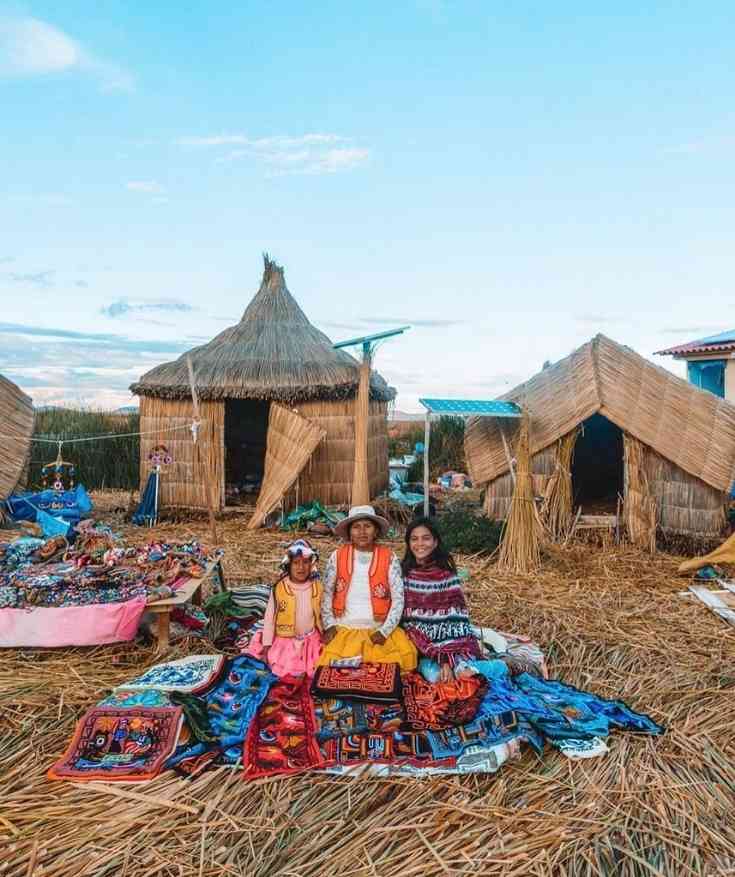

Peru is a country with deep-rooted traditions and a rich cultural tapestry. Solo female travelers in Peru should be aware of and respect local customs. Greetings are important; a simple handshake or a cheek kiss is common in social settings.
Respect religious and historical sites by following guidelines and dressing modestly. In rural areas, traditional beliefs are strongly upheld, so always ask permission before taking photographs of people or their property.
Do’s and Dont’s in Peru
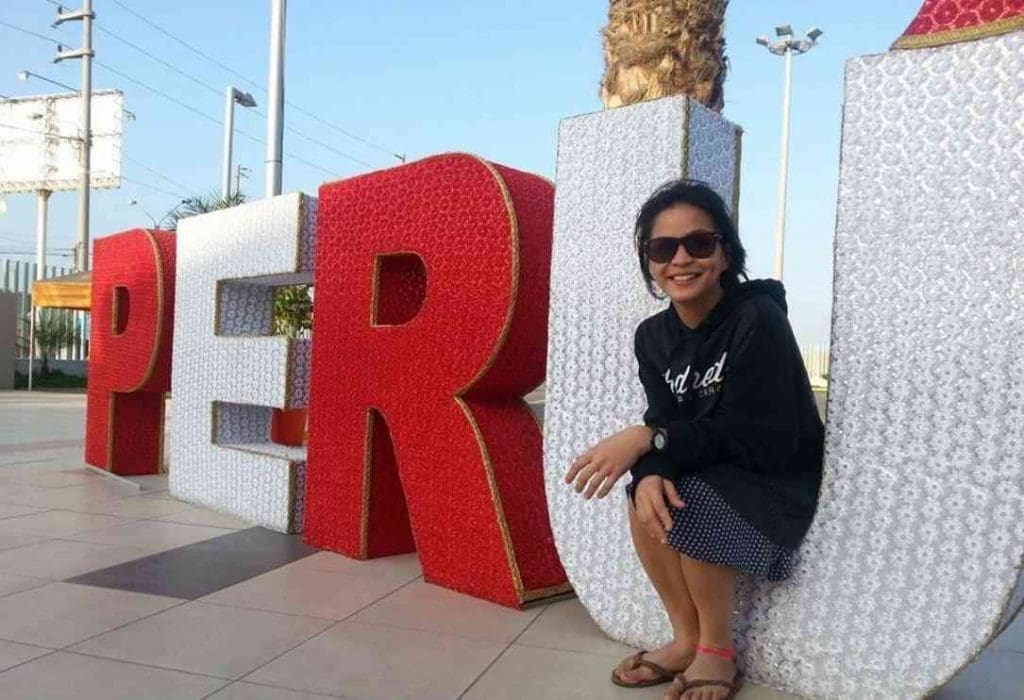

Navigating social settings in Peru requires an understanding of local customs and etiquette, especially for solo travelers. Here’s a list of dos and don’ts to help you blend in and respect the local culture:
- ✅ Greet Politely: A handshake is common in formal settings, while a single kiss on the cheek is typical among friends. Always greet people warmly when entering a room.
- ✅ Show Respect for Elders: Peruvians respect age, so offering your seat or showing deference to older individuals is viewed positively.
- ✅ Engage in Small Talk: Peruvians are generally friendly, and engaging in light conversation is a good way to show interest.
- ✅ Accept Hospitality Graciously: If you’re invited to a home, accepting the invitation is seen as polite, and bringing a small gift like sweets or flowers is appreciated.
- ❌ Refuse Food or Drink Offered: It’s polite to accept at least a small amount of what’s offered to avoid offending your host.
- ❌ Bring Up Sensitive Topics: Avoid discussions on politics, religion, or contentious historical issues, especially if you’re not well-informed.
- ❌ Don’t Forget to Tip: In restaurants and for services, a tip of around 10% is customary unless service charge is included.
- ❌ Make ‘OK’ Sign with Fingers: This gesture is considered rude in Peru. Stick to thumbs-up for positive gestures.
- ❌ Take Photos Without Permission: Especially of local people and in sacred or culturally sensitive areas.
- ❌ Flash Valuables in Public: Keep expensive jewelry, cameras, and smartphones out of sight as much as possible.
Always be with people (if you’re not confident to be alone)
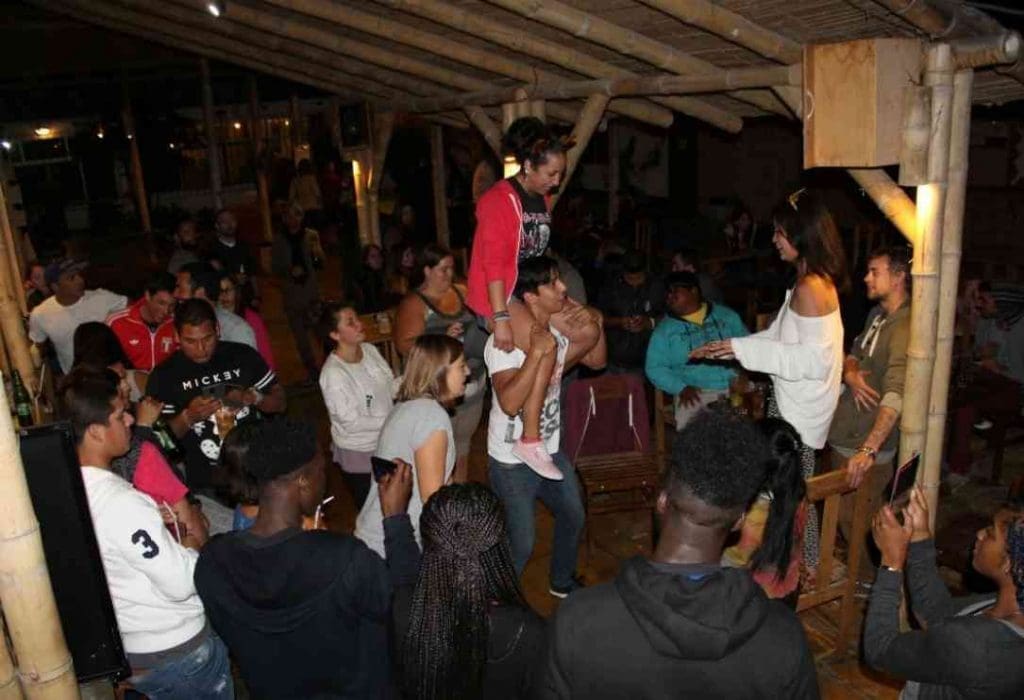

When you are already doing your solo female travel in Peru, you will see what I mean when I said that you’ll always find a travel partner, especially when staying in hostels.
Personally, I walked a couple of times by myself at night but because of this hostel culture, I’m almost never alone! It’s so effortless to make friends in Peru and I recommend that you hang out with people a lot, most especially if you are new to solo travel.
This doesn’t mean that you can’t walk by yourself, please don’t get me wrong. But I realized how women have different levels of confidence when it comes to traveling alone so if you don’t feel 100% confident in going somewhere by yourself, it is better to be with someone.
After all, we’re not proving anything to anyone. It is better to say you’re not comfortable in doing it than to risk your safety.
Speaking Spanish really helps a lot
Peru speaks Spanish like its neighbors and I find my Spanish-speaking skills very handy. When you can speak Spanish, it gives you more confidence to navigate your travels and go around by yourself. In my experience, my fluency in Spanish gave the people around me the many reasons why I shouldn’t be treated indifferently.
When you speak the language, you become part of another culture, and being a part of it gives you a big boost of self-reliance.
Do not travel to Peru without travel insurance
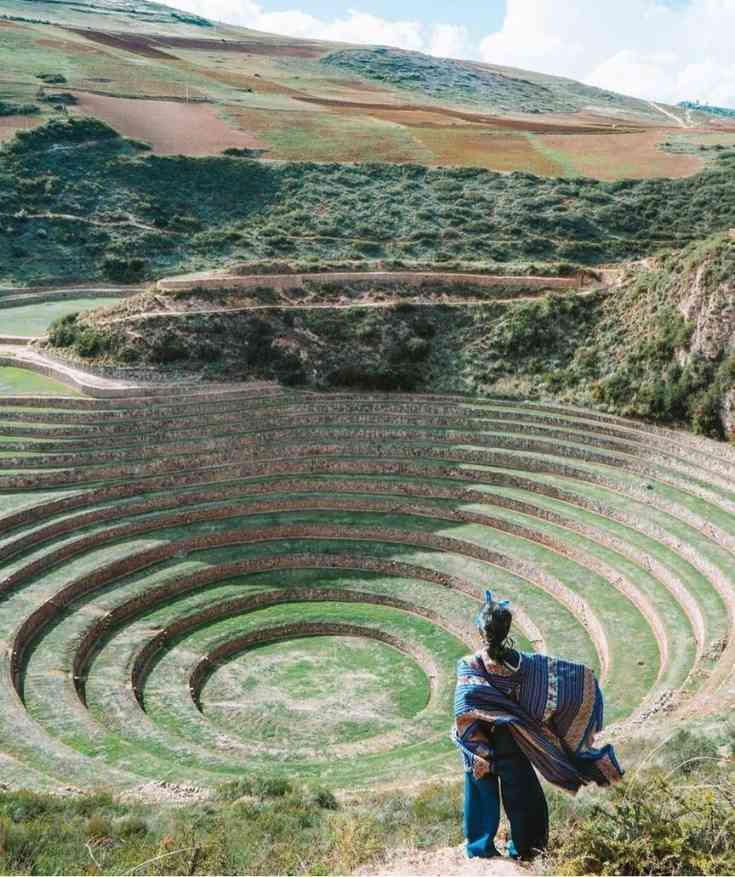

I’ve had enough of people comfortably traveling without insurance. I know it’s another expenditure in your travels but more than anything else, it is important! I’ve had medical emergencies in the past where I found myself without travel insurance. It’s really painfully expensive!
I got hospitalized while I was in Peru and I am really thankful that I purchased travel insurance beforehand. I use SafetyWing and I only pay $40 a month for my travel insurance.
Use Couchsurfing Hangouts
This new feature in the CS app allows you to get in touch and hang out with people who are traveling in Peru. I’ve used it a lot and find it one of the most effective (and quick) ways to meet people when I am traveling anywhere in the world.
Exercise and prepare yourself for the hikes



Everyone can go on an adventurous hike in Peru but take note that some hikes are harder if you are not physically fit. 3 months before your travel to Peru, start working out and prepare your body physically. It will also help to keep a healthy diet and maintain exercise routines when you are already in Cusco.
The altitude in Peru is really high (depending on the area) and it will be very difficult for you to go on Peru tours and hikes if your body is not ready. I’ve seen many people get sick during the hike because their bodies couldn’t take the altitude.
I’m not a person who keeps a regular exercise routine (just pilates and yoga) and I feel like not many Peru travel guides mention the need to physically prepare before your trip. Take this seriously!
Mosquitos and other things on the Amazon side
I didn’t get sick in my time in Peru except for that one moment (nothing major) when my friends and I went to the Amazon Jungle. It was not life-threatening but being sick definitely ruins a trip.
Note that Peru shares the Amazon with Brazil so you can imagine the number of species of mosquitos that you can only find in this part of the planet.
If you are not the vaccine type of person, make sure to bring some malaria pills with you. Peru requires a yellow fever vaccine from visitors only if you traveled to Africa and Brazil.
Hospitals in Peru: what are they like?
I was hospitalized once in Peru, due to the stupid habit of overdrinking and it wasn’t that expensive. However, if anything major happens to you while traveling in Peru, it is very important to have travel insurance.
Sure, hospital bills are affordable in Peru but it’s better not to pay for anything! You may not know what will happen to you on the road! And believe me, I learned it the hard way.
Work exchange/volunteering in Peru
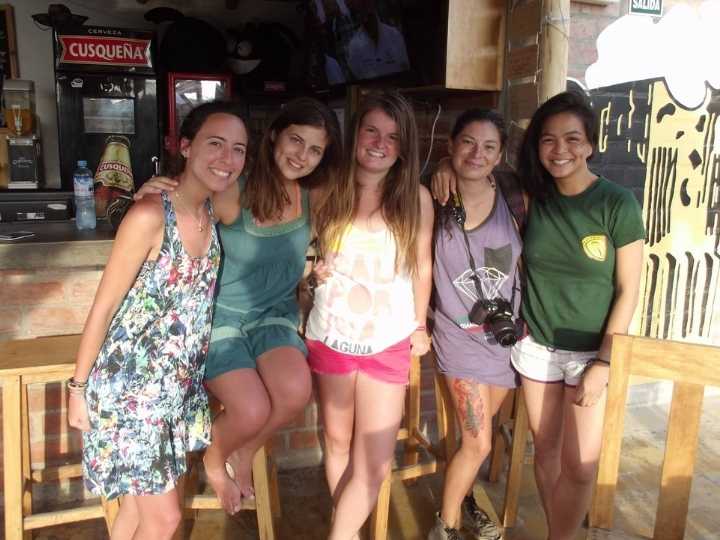

I traveled to South America from 2013 to 2016 mainly doing volunteering. I worked in hostels, restaurants, etc, and got accommodations and food for free in exchange for a few hours of work per week. The jobs are not very hard. It will still give you time to explore the area you chose to work in.
This is the best way to know a place not just in Peru but anywhere in the world. I really recommend you do it! You may sign up with Worldpackers to find the best volunteering jobs in Peru.
Use my code PSIMONMYWAY10 to get $10 off on your membership! Here’s an overview of the work exchange gigs and nature of volunteering jobs in Peru:
- Teaching English in Peru is the most popular. Some many small towns and cities run English schools for kids. I only did this once in Arequipa where I also finished my TEFL certificate.
- Volunteering in hostels in Peru is also big. Most hostels in this country are looking for help in bars. Service in hotels (changing lines for example) is offered as a paying job.
- If you want more peaceful and quiet volunteer in Peru, you can work on farms.
Consider your source
I know the news is one of the most reliable platforms we cling to as it appears to be the only resource we have when planning our travels but before saying no to solo female travel in Peru, make sure you’ve exhausted all your efforts to investigate.
You may contact locals on Couchsurfing to see the current situation (that’s what I do). Just make sure the person/local you are going to contact has enough Couchsurfing credentials. Check references and vouches from guests they hosted.
You can also check my blog, Peru Insider for the latest news and updates about Peru travel!


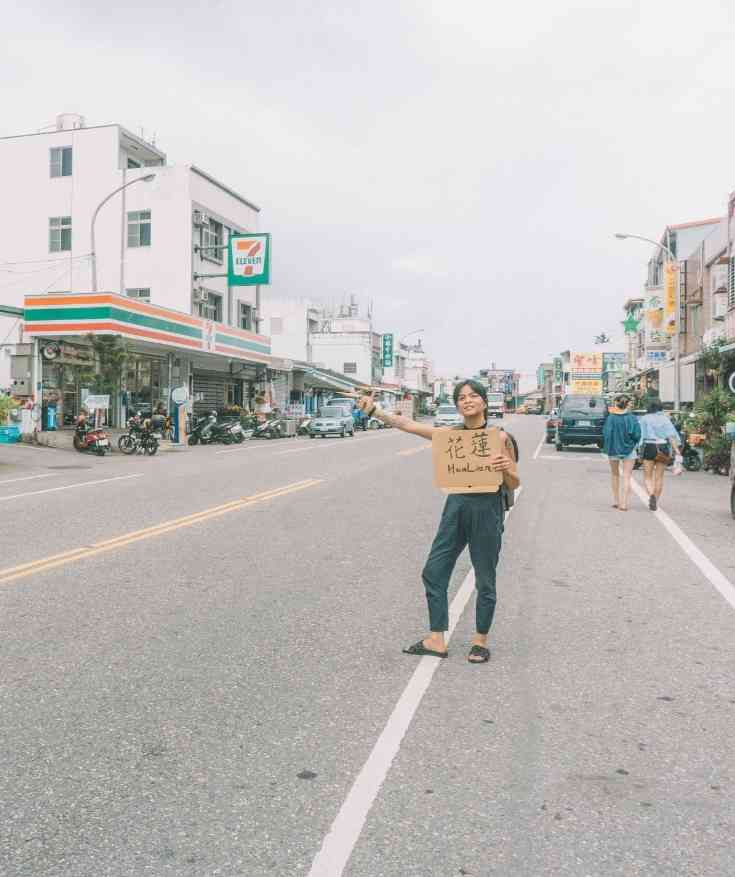

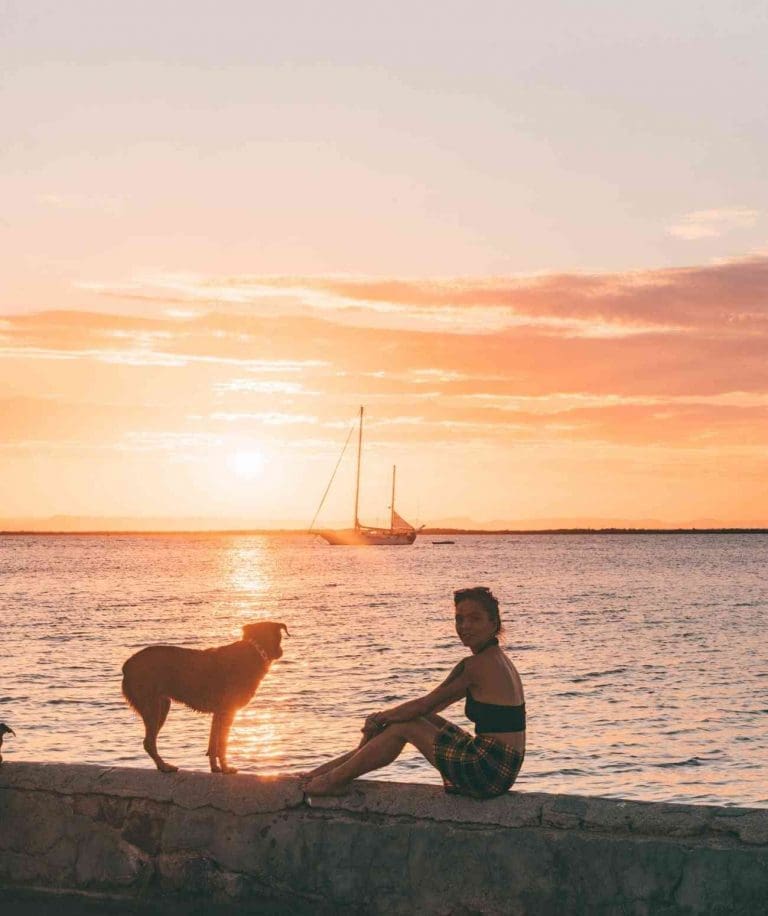
Peru looks great! I would love to visit one day. My husband I have travelled around Asia, now we think we may want to do South American one day. Unfortunately neither of us speak Spanish… we may take some courses to prepare :). Thanks for your article.
Many people I know traveled Peru without language skills. The Peruvians are really friendly!